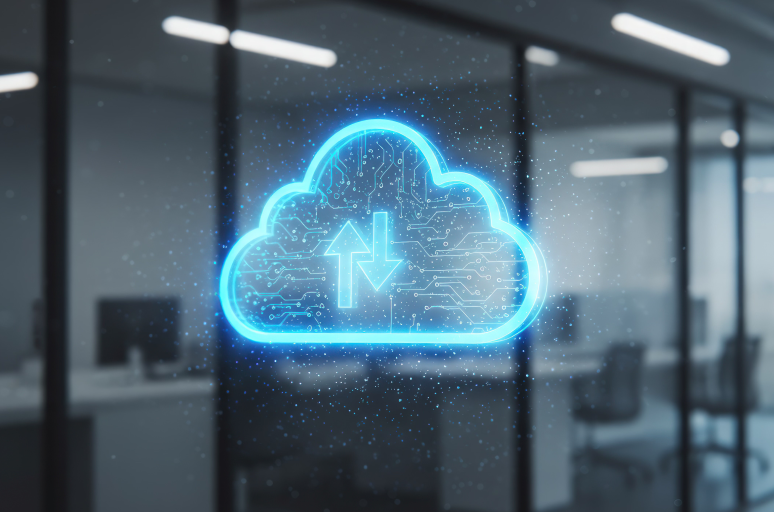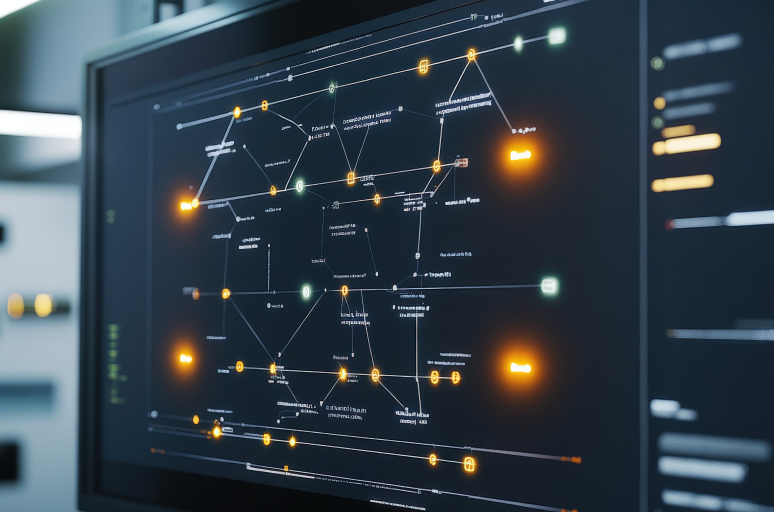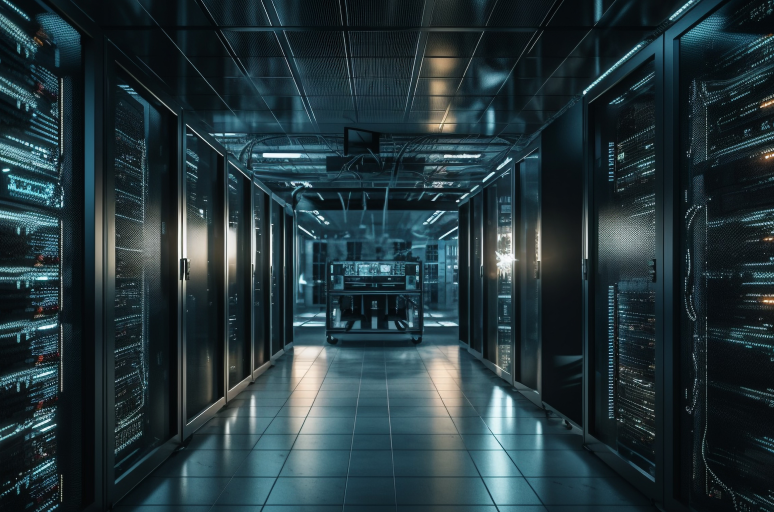Think of enterprise technology like layers of rock beneath the earth's surface. The newest systems sit on top of older foundations that still support critical business operations, even though they were built decades ago. Gartner defines legacy applications as software systems created with outdated technologies and methods, but still crucial for business operations.
As companies push forward with digital transformation, these aging systems create growing problems and are eating up a huge piece of IT budgets, while delivering less value each year. Research shows that typical legacy applications carry $3.61 of technical debt per line of code. That's why figuring out how to update these applications has become so important for business success.
What is a legacy application
Legacy applications are software systems that companies built using older technologies, programming languages, or design approaches that do not fit what organizations require now or fail to meet today's technical expectations. Application modernization refers to the process of updating these older systems in a structured way. Companies might rewrite parts of the code, switch to updated infrastructure, or move their applications to cloud platforms to achieve this transformation.
The effects go well beyond just technical problems. These legacy constraints stop companies from rolling out new features quickly, prevent improvements to customer experiences, and create operational risks through security weaknesses and compliance issues that affect their competitive position.
Business risks of maintaining legacy systems
Legacy systems force long development cycles that give competitors an advantage. In consequence businesses that keep running legacy applications face growing risks that can destabilize operations and seriously slow business growth, as developers focus on adding patches and temporary fixes instead of building features that customers expect.
Escalating maintenance costs and resource allocation
When you look at the numbers, legacy system maintenance takes up far more resources than the business value it provides. Finding developers for legacy technologies makes this even harder and more expensive. There is also the hidden cost of missed opportunities when talented developers spend their time keeping old systems running instead of creating new features that could increase revenue.
Security vulnerabilities and compliance gaps
Legacy applications are often open to attack methods their original creators never imagined because of their outdated security measures. Without current encryption, proper authentication systems, and regular security updates, these systems become easy targets. Meeting regulatory requirements becomes harder too. Frameworks such as GDPR and CCPA demand capabilities that old systems simply can not provide. This puts organizations at risk of penalties and costly ad hoc modernizations.
Integration limitations with modern technologies
Old software systems have difficulty connecting with current applications due to API mismatches. Today's microservices exchange information through RESTful interfaces and JSON formats. Meanwhile, older systems depend on company-specific protocols or scheduled file transfers between systems. When organizations try to move these applications to cloud platforms, they face obstacles.
The software often requires particular hardware configurations or older operating system versions that cloud providers do not offer in their virtual setups. Additional challenges come up when technology vendors end support for older connection methods. As a result, companies must keep running old middleware software. This extra layer makes their systems more complex and introduces additional places where things can go wrong.
Essential application modernization tools and technologies
Successful transformation projects need advanced tools that automate analysis, help with migration, and ensure smooth deployment. The right technology choices make a big difference, so let’s have a look at the most important legacy modernization techniques.
Automated code analysis for successful digital modernization
Static code analyzers find problematic patterns, security issues, and opportunities for improvement in your code without even running it. Programs like SonarQube and OpenText Static Application Security Testing (Fortify) run scans of millions of code lines every hour and create reports that show exactly where to focus modernization efforts for legacy apps. Dependency mapping tools create visual representations of how components connect, showing which integration points need attention. Take CAST Software's analysis platform as an example.
Container setup and deployment solutions
Another type of legacy modernization solutions are Kubernetes and Docker platforms. When strategically integrated with DevOps methodologies, they create automated pipelines spanning the complete software development lifecycle and compresses long release cycles to daily deployment schedules, representing a great acceleration in time-to-market capabilities.
Kubernetes (K8s) is an orchestration platform that automates deployment, scaling, and network management for containerized applications. This enables organizations to transition to distributed systems that deliver enhanced operational flexibility.
Docker packages old applications in containers, making uniform environments that run identically across development, testing, and production stages. This packaging keeps requirements isolated, allowing teams to update systems step by step without disrupting current functions.
API management and integration frameworks
Creating RESTful services lets legacy features work with modern applications without complete rewrites. API gateways such as Kong or Apigee add authentication, control usage rates, and translate between legacy systems and newer applications. GraphQL takes this further by letting applications request exactly the data they need. PayPal's engineering team reported their GraphQL implementation cut mobile app data usage and substantially improved developers’ productivity. Middleware solutions act as translators, converting between old protocols and current standards while keeping transactions reliable.
Database modernization and migration utilities
Schema conversion tools automatically transform database structures from legacy formats into modern relational or NoSQL designs. While choosing automated tools complementary to infrastructure modernization that work reliably for critical data, you can have a look at AWS Database Migration Service has handled over 1.5M database moves.
Adopting NoSQL databases like MongoDB or DynamoDB delivers advantages including horizontal scalability and adaptable schema designs that accommodate evolving data requirements. During migration, data synchronization platforms maintain consistency across legacy and modernized systems, enabling seamless transitions with zero downtime.
Application modernization process execution
Getting digital modernization right means following a careful process that handles technical complexity while keeping the business running.
Data migration strategies and best practices
ETL stands for Extract, Transform, and Load. These processes performed by application modernization software represent a critical component of legacy application migration:
- Extract. This first step involves pulling data out of your existing legacy systems and databases. The process requires careful planning to make sure nothing gets left behind. For example, a financial institution might extract customer transaction records from a 20-year-old mainframe system before migrating to a cloud-based platform.
- Transform. After you extract the data, it often needs significant work before it fits into your new system. This phase focuses on cleaning up messy data, fixing inconsistent formats, and reorganizing information to match what your target system expects. For instance, your old system might store customer names in various forms throughout your database, with some in all caps and others in mixed cases. The transformation process standardizes these elements so everything looks consistent and works properly in the new environment.
- Load. The final step imports the transformed data into the new destination platform or application. As an example, the cleaned and standardized customer data would be loaded into a modern CRM system, ensuring all records are properly indexed and accessible through the new interface.
Automated comparison algorithms check migration accuracy - checksums confirm data has not changed while business rule validation ensures information still makes sense. Having rollback procedures ready provides protection when problems occur. Database snapshots and logs let teams restore previous states quickly to meet recovery time goals. Solutions like Talend or Apache NiFi can manage complex transformations while tracking every change for compliance.
Testing
Using automated, AI-supported testing, cuts validation work by 50% compared to manual testing. Test automation is able to run hundreds of scenarios every hour, catching problems right after code changes. Performance testing simulates real-world usage to find problems in user’s journey before an app goes live. While load testing tools, e.g. JMeter and Gatling create virtual users to push modernized applications to their limits. Setting clear user acceptance criteria connects technical improvements to business goals. An e-commerce platform defined specific targets for response times, transaction success rates, and concurrent users to guide their modernization testing.
Change management and user adoption strategies
When companies update their infrastructure, success depends on more than just replacing old applications. Teams need to learn new skills, both via studying online at their own pace, and onsite with instructors. The key is offering both options. It is crucial to listen to what employees and users actually think. They need to grasp the necessity and find a way how to modernize legacy applications. You can cover process understanding using:
- well-designed surveys – they help track progress,
- focus groups – to provide deeper insights, and
- analytics tools – that clearly show how people really use the new systems.
This feedback allows teams to adjust their approach and fix problems as they go, rather than waiting until the project ends.
Performance monitoring and optimization
Modern monitoring platforms, such as Dynatrace, track thousands of metrics simultaneously across every component, identifying potential failures before they affect users. They also enable smarter resource planning through historical analysis. By examining server usage data from previous months or years, combined with projected business growth, teams can expand their infrastructure capacity well before performance degradation occurs. This proactive approach costs far less than emergency fixes during peak traffic periods.
Cost reduction strategies through modernization initiatives
The financial benefits of modernization go beyond immediate savings. After modernization, companies can innovate faster because modular designs and automated deployment let them experiment quickly. They also create growing returns through better operations and strategic flexibility.
Breaking down current costs shows legacy systems drain resources in several ways:
- hardware maintenance – old servers need expensive support contracts,
- software licensing – perpetual licenses with required maintenance fees even when updates are minimal,
- specialized personnel – high rates for developers with rare legacy skills,
- extended downtime – lost revenue during increasingly common outages.
Efficiency improvements come also from automation replacing manual work. Moreover, moving to virtualization and containers typically achieves a 10-to-1 server reduction, turning large data centers into compact cloud deployments. Power usage drops dramatically too. Streamlining operations removes duplicate systems, simplifies backups, and reduces physical security needs.
Licensing cost optimization through modern alternatives
Free open-source software replaces expensive proprietary programs without losing features. For instance, PostgreSQL offers a free and technically capable alternative to Oracle Database for most business workloads. Moving to subscription models turns big upfront purchases into predictable monthly costs, improving budget flexibility and ensuring continuous updates. Companies ready to modernize often get big discounts on enterprise contracts.
Productivity improvements and operational efficiency gains
Automation cuts manual work throughout development, testing, and deployment. Continuous integration pipelines finish in minutes what used to take days of coordination. Quick deployment cycles speed up feature delivery – modern systems support multiple daily releases instead of quarterly windows common with legacy systems.
Partner with us for legacy application modernization
Are you trying to figure out why modernize legacy applications and how to modernize legacy applications? This challenge goes far beyond just picking new technology. You need to consider:
- what your business actually needs,
- what your budget allows, and
- what your current systems can handle.
Sometimes a complete overhaul makes sense, but other times gradual improvements work better. We can help you make these decisions. Contact RST to look at your situation from all angles – examining your business goals, technical setup, and financial constraints – to recommend modernization approaches that fit your specific needs.







